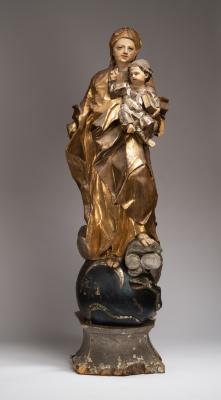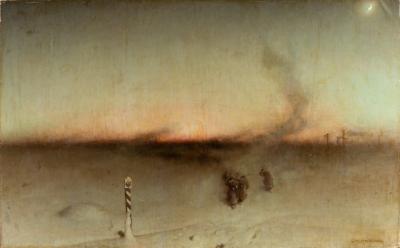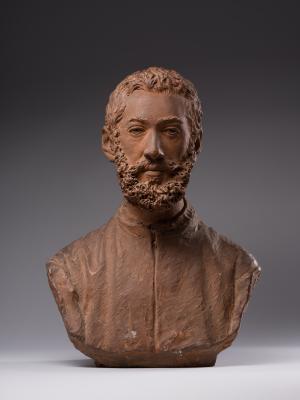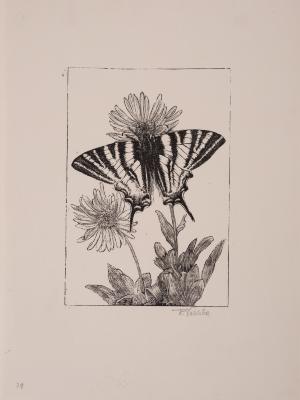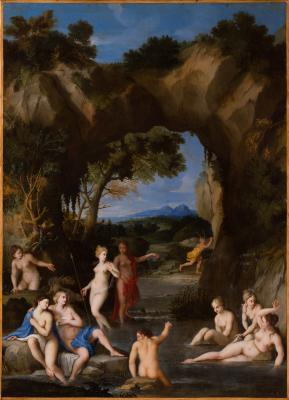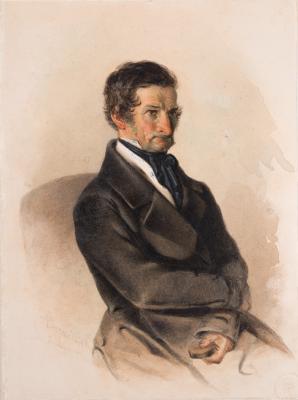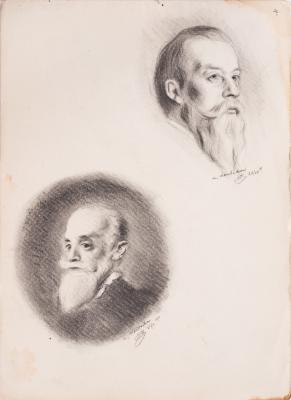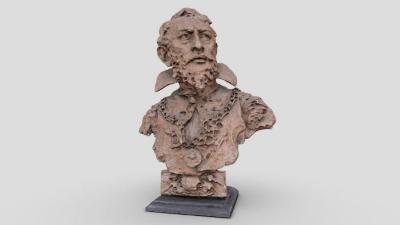This composition was first performed by B. Pinelli in 1815. It was issued in the album Nuova Raccolta di Cinquanta Costumi Pittoreschi incisi all 'acquaforte da Bartolomeo Pinelli Romano (New Collection of Fifty Picturesque Costumes) published in 1816 by the publishing house Nicola de Antoni impresse, Ignazio Pavon Offre e Dedica in Rome. The next version was similar to the so-called Lviv one but not coloured. The latter was issued in the album Nuova Raccolta di Cinquanta Costumi li più interessanti delle città, terre e paesi in provincie diverse del Regno di Napoli (New Collection of Fifty Most Interesting Picturesque Costumes from Cities, Towns and Villages of Different Provinces of the Kingdom of Naples) published in Rome in 1817. The Lviv version differs from the first one of 1815 by brighter colours but less attention of the author to the architecture and characters' clothing detailing. In the foreground in the centre, one can see three figures: a blind musician singing and playing a lute and two women of different heights squinting at him. These three people stand out between the bare walls of two houses in the background of the architecture, the sky, and the fragments of trees and mountains. On the left, near the wall, a barefoot boy is listening to the singer, leaning his head on his hand against the wall. On the right, in a short distance, a man stands against the wall, listening to the singing. He is wearing a blue cloak with a cape, a black hat, and black shoes with golden inserts. A blind musician is dressed in the same bright clothes. He is wearing a bright green cloak with a cape, red trousers, and white stockings; on his head is a hat. A woman and a girl are dressed much poorer in simple and not bright clothes. Instead, the figure of the guy dressed in bright blue pants harmoniously adds to the dark blue vertical of the man's clothes on the right.










